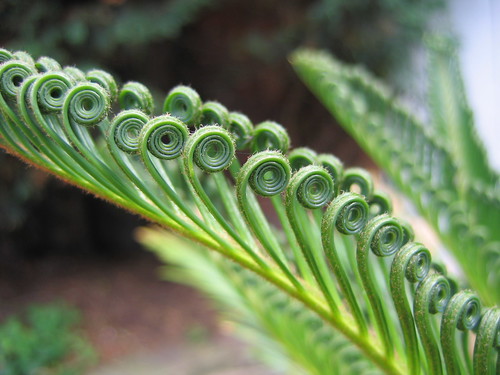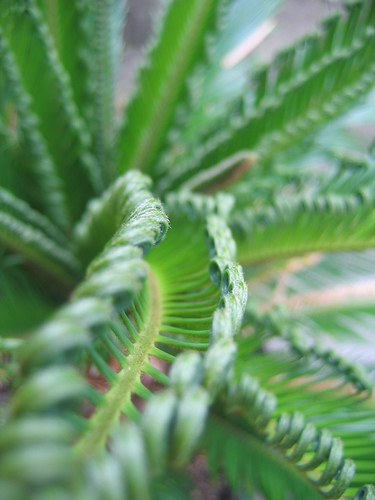I thought these unfurling cycad fronds in my mother’s garden were rather remarkable:
The cycads are an ancient family of plants, more recent than ferns but predating conifers and much, much older than flowering plants, so there’s a certain fittingness in the fact that a cycad at Kew Gardens is thought to be the oldest pot plant in the world. Apparently other botanical gardens make the same claim, but in all cases the plant is a cycad.
In the book The Island of the Colourblind, Oliver Sacks wrote about a couple of neurological disorders concentrated in Pacific island communities. The first half of the book deals with a form of congenital colour-blindness; the second dealt with lytico-bodig, a neuro-degenerative disease found on Guam which is similar to Parkinson’s or ALS (Lou Gehrig’s disease). One of the major hypotheses for the cause of lytico-bodig was toxins from the local cycads, the fruits of which which were used as a source of starch.
In that book the cause of lytico-bodig is left unresolved; the cycad theory was undermined by the fact that the fruit was carefully processed before eating because the locals knew it was poisonous raw, and tests on the cycad flour revealed very very low levels of remaining toxins. But I learn from Wikipedia that an intriguing theory has since emerged to explain it: that the local fruit bats fed on the cycads, and very high levels of toxin built up in their tissues; it was eating the bats that provided a large enough dose of neurotoxin to cause lytico-bodig. You can read the details here.

